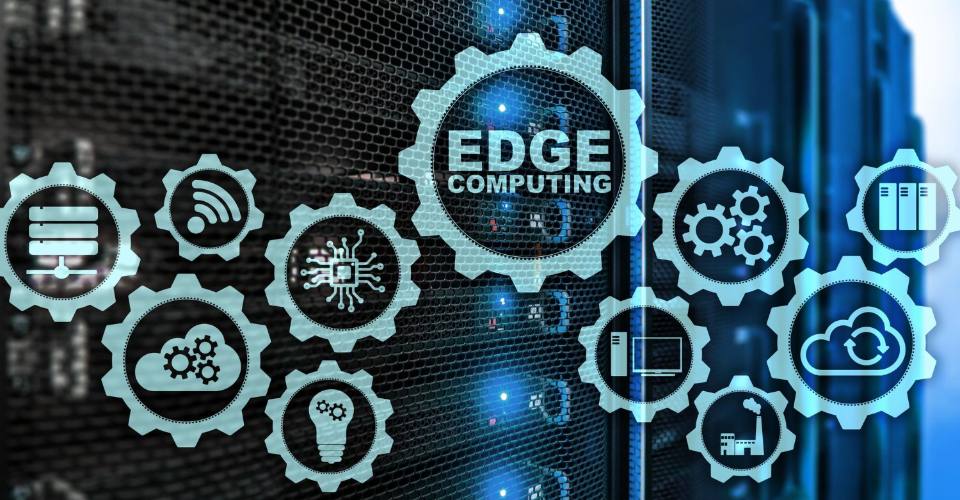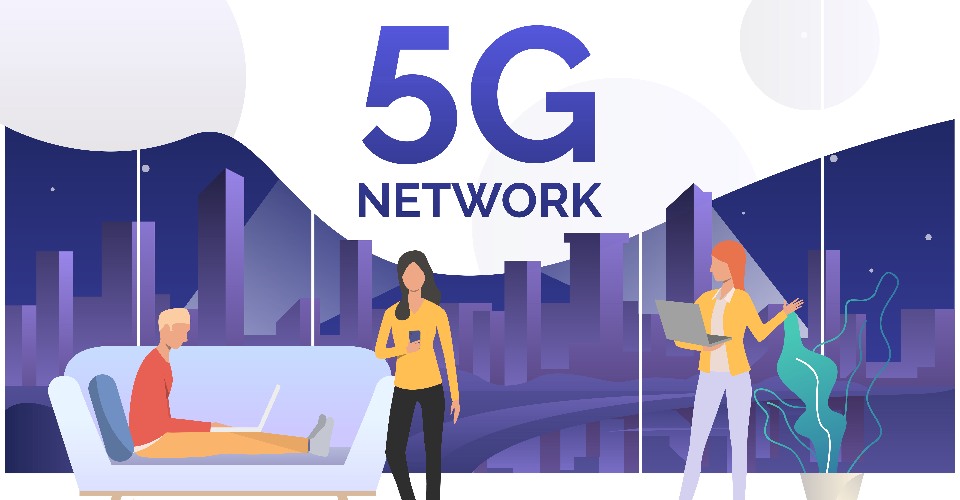The Power of Real-Time Data Processing
In today’s fast-paced digital world, real-time data processing has become more critical than ever. Imagine a self-driving car speeding down a road, processing data from sensors to make split-second decisions without lag. This is where edge computing comes into play, helping devices process information faster by performing data calculations closer to where the data is created. With the explosion of connected devices generating vast amounts of data, traditional methods of processing everything in centralized data centers are no longer practical. Instead, edge computing offers a transformative solution to ensure data is processed efficiently, securely, and in real time.
In this article, we will explore what edge computing is, why it is essential for handling real-time data, and how it is optimizing network performance and computing efficiency across industries.
What is Edge Computing?
Understanding Edge Computing
Edge computing refers to the practice of processing data closer to its source rather than sending it to a centralized cloud or data center. This means that instead of waiting for data to travel long distances for processing, edge computing enables quick decision-making by allowing devices, sensors, and local servers to process data in real-time at the “edge” of the network.
How Edge Computing Works
- Local Processing: Instead of relying solely on centralized systems, edge devices process data locally.
- Minimal Latency: By reducing the time spent transmitting data, edge computing minimizes latency, ensuring faster results.
- Optimized Bandwidth: With data being processed locally, the amount of data transferred to the cloud is significantly reduced, optimizing bandwidth.
The Importance of Edge Computing for Real-Time Data Processing
Reducing Latency for Real-Time Insights
In industries where split-second decisions are crucial, such as healthcare or autonomous vehicles, edge computing drastically reduces the time it takes for data to be processed. By bringing processing closer to the data source, edge computing ensures that critical operations are not delayed due to long transmission times. For example, self-driving cars need to process data about the road and surrounding environment in real-time to make immediate decisions and ensure safety. With edge computing, this is made possible, enabling a low-latency response.
Enhancing Network Optimization and Efficiency
The sheer volume of data generated by IoT devices, sensors, and users is overwhelming for traditional cloud infrastructure. Edge computing helps by offloading some of the processing and storage from centralized servers to edge devices. This network optimization leads to improved performance, as it reduces congestion and ensures that networks are not overwhelmed with data traffic. Localized data processing also ensures better resource allocation, leading to improved computing efficiency.
Cost Reduction and Sustainability Benefits
Processing data locally reduces the need for continuous data transmission to distant cloud servers, cutting down on bandwidth usage and reducing energy consumption. This shift not only brings cost savings but also contributes to sustainability efforts by lowering carbon footprints associated with data transmission and cloud computing.
5 Reasons Edge Computing is Crucial for Real-Time Data Processing
Edge computing is revolutionizing the way we handle data, especially as we navigate an increasingly connected world. With the rise of the Internet of Things (IoT), autonomous vehicles, and smart cities, the demand for real-time data processing has surged. Traditional cloud computing, while powerful, often struggles with the sheer volume and speed of data being generated at the edge of networks. Edge computing addresses these challenges by moving processing power closer to where data is generated, improving speed, efficiency, and overall performance.
In this article, we’ll explore five reasons edge computing is crucial for real-time data processing and how it is helping organizations optimize network performance, enhance computing efficiency, and provide better insights faster.
1. Reduced Latency for Faster Decision-Making
One of the primary benefits of edge computing is the dramatic reduction in latency, or the time delay between data generation and its processing. Latency is a critical factor in many industries where real-time decision-making is essential, such as healthcare, automotive, and industrial automation.
How Edge Computing Helps:
- Data Processing at the Source: Rather than sending data to centralized cloud servers, edge devices process the data locally, significantly reducing the time it takes to send and receive information. This is particularly beneficial in applications like autonomous vehicles, where split-second decisions are necessary.
- Real-Time Insights: By processing data at the edge, companies can get real-time insights without waiting for cloud-based systems to respond. For example, in predictive maintenance, edge computing can immediately analyze sensor data and alert operators to potential issues before they lead to system failures.
2. Enhanced Network Optimization
Network optimization is crucial in handling the enormous volume of data generated by connected devices. With millions of devices collecting and transmitting data, traditional cloud-based systems may become overwhelmed, causing slowdowns and inefficiencies.
How Edge Computing Helps:
- Minimizes Bandwidth Use: By processing data locally and only sending the most relevant information to the cloud, edge computing reduces the amount of bandwidth required, leading to significant cost savings for businesses.
- Avoids Network Congestion: Since edge computing processes data at or near its source, it avoids the bottlenecks that occur when large amounts of data need to travel across long distances to centralized cloud servers. This reduces network congestion, improving overall network performance.
Statistical Insight: According to a report by IDC, over 40% of all data generated by connected devices will be processed at the edge by 2025, showing a clear trend towards decentralized data processing.
3. Improved Data Security and Privacy
As more businesses rely on IoT devices and other connected systems, data security becomes a growing concern. Sending sensitive data to the cloud for processing increases the risk of exposure to cyberattacks and breaches. With edge computing, data is processed locally, ensuring that sensitive information is kept closer to its source.
How Edge Computing Helps:
- Local Data Storage: Instead of transmitting all data back to centralized servers, edge computing allows sensitive information to be processed and stored locally. This reduces the attack surface and lowers the risk of data breaches.
- Encryption and Authentication: Edge devices can implement advanced security protocols, such as encryption and multi-factor authentication, to protect data in transit and at rest. This ensures that only authorized users can access critical information.
Statistical Insight: A report by Forrester Research found that 69% of businesses consider edge computing an essential part of their security strategy due to its ability to safeguard data and minimize threats.
4. Better Scalability for Growing Data Demands
As IoT devices proliferate and data generation continues to increase, businesses need systems that can scale efficiently without compromising performance. Cloud computing is often overwhelmed by the sheer volume of data, leading to increased latency and delays in processing.
How Edge Computing Helps:
- Decentralized Processing: Edge computing scales naturally by distributing computing power across a network of edge devices. This allows businesses to handle more devices and data sources without overloading a central server.
- Flexibility in Deployment: Edge computing devices can be deployed anywhere—from factories to remote locations—enabling businesses to expand their operations without the need for massive infrastructure upgrades.
Statistical Insight: The global edge computing market is expected to grow from $4.68 billion in 2022 to $43.4 billion by 2028, demonstrating the rising demand for scalable, efficient data processing solutions.
5. Improved Computing Efficiency and Cost-Effectiveness
Edge computing allows organizations to optimize their computing resources by processing data closer to its source. By shifting some of the workload from centralized cloud servers to edge devices, businesses can reduce their reliance on expensive cloud infrastructure.
How Edge Computing Helps:
- Optimized Resource Utilization: Edge computing devices typically require less power and have lower operational costs compared to large data centers. This makes them a more cost-effective option for real-time data processing.
- Energy Efficiency: Since data doesn’t need to travel long distances to centralized servers, edge computing reduces the energy consumption associated with data transmission. This not only leads to cost savings but also contributes to sustainability efforts by minimizing carbon emissions.
Statistical Insight: A Gartner report estimates that edge computing will help companies save as much as 30% on network and bandwidth costs by reducing the need for constant cloud-based data transfers.
Edge computing is playing a transformative role in the world of real-time data processing. By processing data locally, it reduces latency, optimizes network performance, enhances security, improves scalability, and offers a more efficient and cost-effective way to handle the growing volume of data generated by connected devices.
As industries continue to embrace the benefits of edge computing, we can expect to see more efficient, responsive, and secure networks that can handle the demands of modern data-driven applications. Whether you’re in healthcare, manufacturing, or autonomous systems, edge computing is shaping the future of real-time data processing.
As we move forward into a more connected world, edge computing will continue to be the key technology enabling businesses to process data more efficiently and make smarter, real-time decisions.
Key Benefits of Edge Computing
1. Faster Data Processing and Decision Making
Edge computing plays a vital role in enabling faster data processing and decision-making, which is crucial in today’s fast-paced world. By moving processing capabilities closer to the source of data generation, businesses can significantly reduce the latency involved in data transfer to centralized cloud servers.
Benefits of Faster Data Processing:
- Real-Time Decision-Making: With data processed locally, organizations can make immediate decisions without waiting for external systems to process and respond. This speed is critical in sectors like healthcare, where real-time patient monitoring and diagnostics can be life-saving, or manufacturing, where the immediate analysis of machine data can prevent costly unplanned downtime.
- Enhanced Operational Efficiency: By leveraging edge computing, businesses can proactively address potential issues before they escalate. For example, predictive maintenance in manufacturing can help detect machinery problems before they cause system failures.
Statistical Insight:
According to a McKinsey report, businesses that use real-time data processing can improve their operational efficiency by 20-25%, resulting in faster decision-making and increased profitability.
2. Increased Security in Edge Computing
One of the key advantages of edge computing is its ability to enhance security by processing data locally instead of constantly transmitting it to centralized cloud servers. This method reduces the exposure of sensitive information to potential cyber threats and unauthorized access, ensuring that data remains safer throughout its lifecycle.
How Edge Computing Enhances Security:
- Reduced Data Exposure: By processing data at the source, only necessary insights are sent to the cloud, reducing the volume of sensitive information in transit. This minimizes the chances of interception by malicious actors.
- Local Data Storage: Edge devices can store data locally, allowing businesses to retain control over sensitive information, especially in industries that handle confidential data such as finance and healthcare.
- Built-in Security Measures: Edge devices often implement advanced encryption, authentication, and access control features, ensuring that data is protected both at rest and in transit.
Statistical Insight: According to a Forrester Research report, 69% of organizations regard edge computing as a critical component of their cybersecurity strategy, underlining its role in securing sensitive data against breaches.
3. Reduced Bandwidth Usage: Enhancing Network Optimization
Edge computing significantly contributes to network optimization by minimizing bandwidth usage. By processing data locally, only the most relevant or critical information is transmitted to the cloud, dramatically reducing the need for large data transfers. This is particularly beneficial in environments where IoT devices generate massive amounts of data but don’t require all of it to be stored remotely.
Key Benefits of Reduced Bandwidth Usage:
- Less Data Transmission: Only processed, actionable data is sent to the cloud, rather than raw, unfiltered data.
- Reduced Network Congestion: By offloading data processing to edge devices, the overall load on the network is reduced, improving network efficiency and reducing congestion.
- Faster Data Delivery: With reduced traffic, there’s less network delay, resulting in quicker access to the most relevant insights for decision-making.
Statistical Insight: Research shows that edge computing can cut network traffic by up to 90%, offering both cost savings and improved system performance, especially in data-heavy environments like smart cities or industrial IoT systems.
4. Enhanced Reliability and Resilience with Edge Computing
One of the key advantages of edge computing is its ability to enhance system reliability and resilience, which is critical for maintaining uninterrupted business operations.
- Reduced Dependency on Centralized Servers: Traditional cloud computing relies heavily on centralized data centers, which can experience downtime due to technical failures, maintenance, or network issues. With edge computing, processing and data storage occur closer to the source, meaning edge devices can function independently of cloud servers.
- Local Data Processing for Business Continuity: In the event of a cloud service outage or network disruption, edge devices can continue processing data locally, reducing the risk of downtime. For industries that require constant availability—such as healthcare, transportation, and finance—this capability is vital for maintaining operational continuity.
Statistical Insight: A report by Forrester Research found that 90% of businesses using edge computing saw improved system uptime and resilience, highlighting the technology’s ability to prevent interruptions and support business continuity in real-time.
By reducing reliance on centralized infrastructure, edge computing ensures greater resilience in data processing, offering businesses the reliability needed to thrive in fast-paced, data-driven environments.
Real-World Applications of Edge Computing
Healthcare
Edge computing is revolutionizing healthcare by enabling remote patient monitoring and real-time diagnostics. With sensors and wearable devices processing data locally, doctors can quickly analyze vital signs, leading to faster interventions and improved patient care.
Automotive
In the automotive industry, edge computing plays a vital role in autonomous driving and vehicle diagnostics. For instance, self-driving cars use edge devices to process data from onboard sensors, enabling them to react to the environment in real-time without relying solely on cloud computing.
Smart Cities and IoT
In smart cities, edge computing helps manage and analyze data from numerous sensors distributed throughout the city. This includes traffic management, waste management, and energy efficiency, all of which benefit from real-time data processing to enhance the quality of life for citizens.
At a Glance: Edge Computing’s Key Advantages
- Improved Latency: Enables real-time data processing with minimal delays.
- Cost and Bandwidth Optimization: Reduces data transmission and saves on network resources.
- Enhanced Security: Processes sensitive data locally, lowering the risk of cyberattacks.
- Scalability: Expands the capacity of devices and networks without overwhelming centralized systems.
Key Takeaways
- Edge computing brings data processing closer to the source, reducing latency and improving decision-making.
- By offloading work from centralized data centers, edge computing optimizes network performance and computing efficiency.
- The technology supports real-time insights, crucial for industries such as healthcare, automotive, and smart cities.
- In addition to its operational benefits, edge computing helps reduce costs and energy consumption, contributing to more sustainable practices.
FAQs
1. How does edge computing differ from cloud computing?
While cloud computing involves processing data in centralized data centers, edge computing brings data processing closer to the devices that generate the data. This reduces latency and improves efficiency.
2. What are the main challenges of edge computing?
The primary challenges include ensuring the security of edge devices, managing distributed networks, and ensuring smooth integration with existing cloud systems.
3. What industries benefit most from edge computing?
Industries like healthcare, automotive, manufacturing, and smart cities are among the biggest beneficiaries, as they require real-time data processing for improved operations.
Conclusion
As the amount of data generated by IoT devices and other connected systems continues to rise, the need for faster, more efficient data processing is undeniable. Edge computing is emerging as a crucial technology in meeting these demands, offering low-latency, cost-efficient, and secure solutions for real-time data processing. By enabling local data analysis and decision-making, edge computing is transforming industries and paving the way for smarter, more responsive networks. Whether it’s in autonomous vehicles, healthcare, or manufacturing, edge computing is laying the foundation for the next wave of technological advancements that will shape our future.



















Leave a Reply